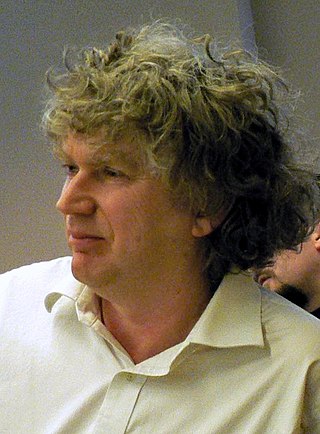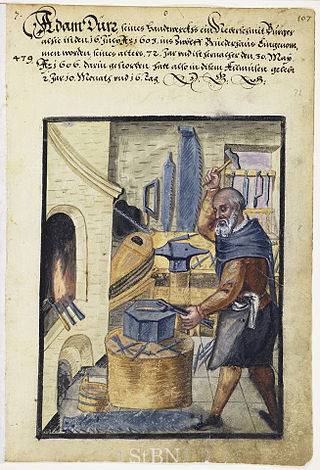Scientism is the view that science and the scientific method are the best or only way to render truth about the world and reality.

Mario Augusto Bunge was an Argentine-Canadian philosopher and physicist. His philosophical writings combined scientific realism, systemism, materialism, emergentism, and other principles.
Sociotechnical systems (STS) in organizational development is an approach to complex organizational work design that recognizes the interaction between people and technology in workplaces. The term also refers to coherent systems of human relations, technical objects, and cybernetic processes that inhere to large, complex infrastructures. Social society, and its constituent substructures, qualify as complex sociotechnical systems.

Science studies is an interdisciplinary research area that seeks to situate scientific expertise in broad social, historical, and philosophical contexts. It uses various methods to analyze the production, representation and reception of scientific knowledge and its epistemic and semiotic role.

Science and technology studies (STS) or science, technology, and society is an interdisciplinary field that examines the creation, development, and consequences of science and technology in their historical, cultural, and social contexts.
Critical rationalism is an epistemological philosophy advanced by Karl Popper on the basis that, if a statement cannot be logically deduced, it might nevertheless be possible to logically falsify it. Following Hume, Popper rejected any inductive logic that is ampliative, i.e., any logic that can provide more knowledge than deductive logic. This led Popper to his falsifiability criterion.
Actor–network theory (ANT) is a theoretical and methodological approach to social theory where everything in the social and natural worlds exists in constantly shifting networks of relationships. It posits that nothing exists outside those relationships. All the factors involved in a social situation are on the same level, and thus there are no external social forces beyond what and how the network participants interact at present. Thus, objects, ideas, processes, and any other relevant factors are seen as just as important in creating social situations as humans.

A social robot is an autonomous robot that interacts and communicates with humans or other autonomous physical agents by following social behaviors and rules attached to its role. Like other robots, a social robot is physically embodied Some synthetic social agents are designed with a screen to represent the head or 'face' to dynamically communicate with users. In these cases, the status as a social robot depends on the form of the 'body' of the social agent; if the body has and uses some physical motors and sensor abilities, then the system could be considered a robot.
The ethics of technology is a sub-field of ethics addressing the ethical questions specific to the Technology Age, the transitional shift in society wherein personal computers and subsequent devices provide for the quick and easy transfer of information. Technology ethics is the application of ethical thinking to the growing concerns of technology as new technologies continue to rise in prominence.

Social construction of technology (SCOT) is a theory within the field of science and technology studies. Advocates of SCOT—that is, social constructivists—argue that technology does not determine human action, but that rather, human action shapes technology. They also argue that the ways a technology is used cannot be understood without understanding how that technology is embedded in its social context. SCOT is a response to technological determinism and is sometimes known as technological constructivism.
Theories of technological change and innovation attempt to explain the factors that shape technological innovation as well as the impact of technology on society and culture. Some of the most contemporary theories of technological change reject two of the previous views: the linear model of technological innovation and other, the technological determinism. To challenge the linear model, some of today's theories of technological change and innovation point to the history of technology, where they find evidence that technological innovation often gives rise to new scientific fields, and emphasizes the important role that social networks and cultural values play in creating and shaping technological artifacts. To challenge the so-called "technological determinism", today's theories of technological change emphasize the scope of the need of technical choice, which they find to be greater than most laypeople can realize; as scientists in philosophy of science, and further science and technology often like to say about this "It could have been different." For this reason, theorists who take these positions often argue that a greater public involvement in technological decision-making is desired.
Public awareness of science (PAwS) is everything relating to the awareness, attitudes, behaviors, opinions, and activities that comprise the relations between the general public or lay society as a whole to scientific knowledge and organization. This concept is also known as public understanding of science (PUS), or more recently, public engagement with science and technology (PEST). It is a comparatively new approach to the task of exploring the multitude of relations and linkages science, technology, and innovation have among the general public. While early work in the discipline focused on increasing or augmenting the public's knowledge of scientific topics, in line with the information deficit model of science communication, the deficit model has largely been abandoned by science communication researchers. Instead, there is an increasing emphasis on understanding how the public chooses to use scientific knowledge and on the development of interfaces to mediate between expert and lay understandings of an issue. Newer frameworks of communicating science include the dialogue and the participation models. The dialogue model aims to create spaces for conversations between scientists and non-scientists to occur while the participation model aims to include non-scientists in the process of science.

According to Robin A. Williams and David Edge (1996), "Central to social shaping of technology (SST) is the concept that there are choices inherent in both the design of individual artifacts and systems, and in the direction or trajectory of innovation programs."

Trevor J. Pinch was a British sociologist, part-time musician and chair of the science and technology studies department at Cornell University. In 2018, he won the J.D. Bernal Prize from the Society for Social Studies of Science for "distinguished contributions to Science and Technology Studies over the course of [a] career."
Labelling or using a label is describing someone or something in a word or short phrase. For example, the label "criminal" may be used to describe someone who has broken a law. Labelling theory is a theory in sociology which ascribes labelling of people to control and identification of deviant behaviour. It has been argued that labelling is necessary for communication. However, the use of the term is often intended to highlight the fact that the label is a description applied from the outside, rather than something intrinsic to the labelled thing. This can be done for several reasons:
In science studies, the social process of blackboxing is based on the abstract notion of a black box. To cite Bruno Latour, blackboxing is "the way scientific and technical work is made invisible by its own success. When a machine runs efficiently, when a matter of fact is settled, one need focus only on its inputs and outputs and not on its internal complexity. Thus, paradoxically, the more science and technology succeed, the more opaque and obscure they become."
Engineering studies is an interdisciplinary branch of social sciences and humanities devoted to the study of engineers and their activities, often considered a part of science and technology studies (STS), and intersecting with and drawing from engineering education research. Studying engineers refers among other to the history and the sociology of their profession, its institutionalization and organization, the social composition and structure of the population of engineers, their training, their trajectory, etc. A subfield is for instance Women in engineering. Studying engineering refers to the study of engineering activities and practices, their knowledge and ontologies, their role into the society, their engagement.
Technoself studies, commonly referred to as TSS, is an emerging, interdisciplinary domain of scholarly research dealing with all aspects of human identity in a technological society focusing on the changing nature of relationships between the human and technology. As new and constantly changing experiences of human identity emerge due to constant technological change, technoself studies seeks to map and analyze these mutually influential developments with a focus on identity, rather than technical developments. Therefore, the self is a key concept of TSS. The term "technoself", advanced by Luppicini (2013), broadly denotes evolving human identity as a result of the adoption of new technology, while avoiding ideological or philosophical biases inherent in other related terms including cyborg, posthuman, transhuman, techno-human, beman, digital identity, avatar, and homotechnicus though Luppicini acknowledges that these categories "capture important aspects of human identity". Technoself is further elaborated and explored in Luppicini's "Handbook of Research on Technoself: Identity in a Technological Environment".

"Fourth Industrial Revolution", "4IR", or "Industry 4.0" is a buzzword and neologism describing rapid technological advancement in the 21st century. The term was popularised in 2016 by Klaus Schwab, the World Economic Forum founder and executive chairman, who says that the changes show a significant shift in industrial capitalism.

The anthropology of technology (AoT) is a unique, diverse, and growing field of study that bears much in common with kindred developments in the sociology and history of technology: first, a growing refusal to view the role of technology in human societies as the irreversible and predetermined consequence of a given technology's putative "inner logic"; and second, a focus on the social and cultural factors that shape a given technology's development and impact in a society. However, AoT defines technology far more broadly than the sociologists and historians of technology.






